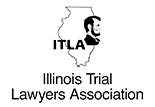
Brachial Plexus Symptoms and Causes
Although brachial plexus birth injuries are more common than cases of Down syndrome, most parents have little or no knowledge about such injuries.
The brachial plexus is a bundle of five different nerves that run from the spinal cord through the neck and down each arm. This important group of nerves – the radial, median, and ulnar nerves branch off from the brachial plexus network – sends the signals that not only control muscle movements but also provide sensation to the arms, wrists hands and fingers.
Injuries to the brachial plexus are caused when the nerve grouping is stretched or torn.
Brachial plexus injuries can range from mild stretching of the nerves, which can over time regenerate, offering a partial or full recovery, to complete tearing away of the nerve bundle from the spinal cord, resulting in permanent damage and potentially, paralysis.
Nerve damage associated with brachial plexus injuries include neurapraxia, which is mild stretching of the nerve, an injury that usually results in a complete recovery within several months; neuroma, a more severe stretching of the nerve bundle that results in scar tissue that can cause further nerve damage; rupture, a tearing of the nerve bundle; and avulsion, when the nerves are torn away from the spinal cord, resulting in permanent injury.
Causes of Brachial Plexus Injuries
While sporting injuries, acts of violence, vehicular accidents, compression of the nerve, blunt force trauma, falls, surgical error and other injuries can cause damage to the brachial plexus (injuries to the nerve bundle are 10 to 20 times more common than spinal cord injuries), it is most often associated with birth injuries.
Some common causes include:
- The excessive pressure of induced labor when high levels of Pitocin are used. When the drug is used in incorrect amounts, it can cause labor to move too fast, leading to shoulder dystocia. Shoulder dystocia injuries occur when the baby’s head passes through the birth canal but the shoulder either cannot pass or requires manipulation in order to do so.
- Excessively forceful use of forceps or a vacuum extractor during a difficult delivery, which can cause the brachial plexus to stretch or tear.
- A long, difficult labor, during which the baby has difficulty passing through the birth canal. The problem can occur either because the baby’s size was misdiagnosed during ultrasound procedures or medical staff failed to properly consider the size or shape of the mother’s pelvis and birth canal before birth.
Symptoms of Brachial Plexus Injuries
There are several different types of brachial plexus injuries, determined by where along the brachial plexus nerve bundle the injury occurred.
based on both the severity of the injury and where along the brachial plexus nerve bundle the injury occurred.
Erb’s palsy, which occurs in 1 or 2 out of 1,000 births – is a result of injury to the nerves along the newborn’s neck, impacting the upper part of the arm.
Klumpke’s palsy, a less common injury than Erb’s palsy, impacts the forearm and lower part of the hand.
Horner’s syndrome, which impacts the nerve signals controlling parts of the face. A rare brachial plexus injury, Horner’s syndrome symptoms include a drooping eyelid, an inability to sweat where the injury manifests itself on the face, and a constricted pupil.
There are certain symptoms to look for to determine whether or not a brachial plexus birth injury has occurred, including:
- Weakness of the muscles of the hand, wrist or arm
- Paralysis of the hand, wrist or arm
- Lack of muscle control in the hand, wrist or arm
- Lack of sensation in the hand, wrist, arm or fingers
- Muscles that are frozen at an awkward angle
- Involuntary muscle spasms.
Risk Factors for Brachial Plexus Injuries
In many cases, brachial plexus injuries that occur at birth could have been avoided if not for a failure to recognize potential risk factors and monitor them.
Risk factors for brachial plexus injuries include:
- Babies that are larger than normal prior to birth.
- Babies that are born prematurely.
- Mothers who gain excessive amounts of weight during pregnancy.
- Mothers with diabetes.
- Mothers with small frames, especially narrow pelvic bones.
In most cases, brachial plexus injuries can be anticipated and avoided through the use of a cesarean section rather than a vaginal birth, which avoids potential injuries during the birthing process.
If brachial plexus injuries do occur, physical therapy to strengthen weak muscles, surgical intervention and massage to stimulate nerve growth are all part of the healing process.












